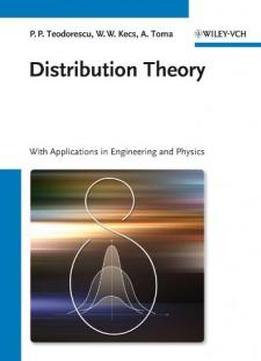
Distribution Theory
by Petre P. Teodorescu /
2013 / English / PDF
3.5 MB Download
In this comprehensive monograph, the authors apply modern
mathematical methods to the study of mechanical and physical
phenomena or techniques in acoustics, optics, and electrostatics,
where classical mathematical tools fail.
In this comprehensive monograph, the authors apply modern
mathematical methods to the study of mechanical and physical
phenomena or techniques in acoustics, optics, and electrostatics,
where classical mathematical tools fail.
They present a general method of approaching problems, pointing out
different aspects and difficulties that may occur. With respect to
the theory of distributions, only the results and the principle
theorems are given as well as some mathematical results. The book
also systematically deals with a large number of applications to
problems of general Newtonian mechanics, as well as to problems
pertaining to the mechanics of deformable solids and physics.
Special attention is placed upon the introduction of corresponding
mathematical models.
They present a general method of approaching problems, pointing out
different aspects and difficulties that may occur. With respect to
the theory of distributions, only the results and the principle
theorems are given as well as some mathematical results. The book
also systematically deals with a large number of applications to
problems of general Newtonian mechanics, as well as to problems
pertaining to the mechanics of deformable solids and physics.
Special attention is placed upon the introduction of corresponding
mathematical models.
Stress is put on the unified presentation of continuous and
discontinuous phenomena.
Stress is put on the unified presentation of continuous and
discontinuous phenomena.
Addressed to a wide circle of readers who use mathematical methods
in their work: applied mathematicians, engineers in various
branches, as well as physicists, while also benefiting students in
various fields.
Addressed to a wide circle of readers who use mathematical methods
in their work: applied mathematicians, engineers in various
branches, as well as physicists, while also benefiting students in
various fields.
Addressed to a wide circle of readers who use mathematical methods
in their work: applied mathematicians, engineers in various
branches, as well as physicists, while also benefiting students in
various fields.
Addressed to a wide circle of readers who use mathematical methods
in their work: applied mathematicians, engineers in various
branches, as well as physicists, while also benefiting students in
various fields.











